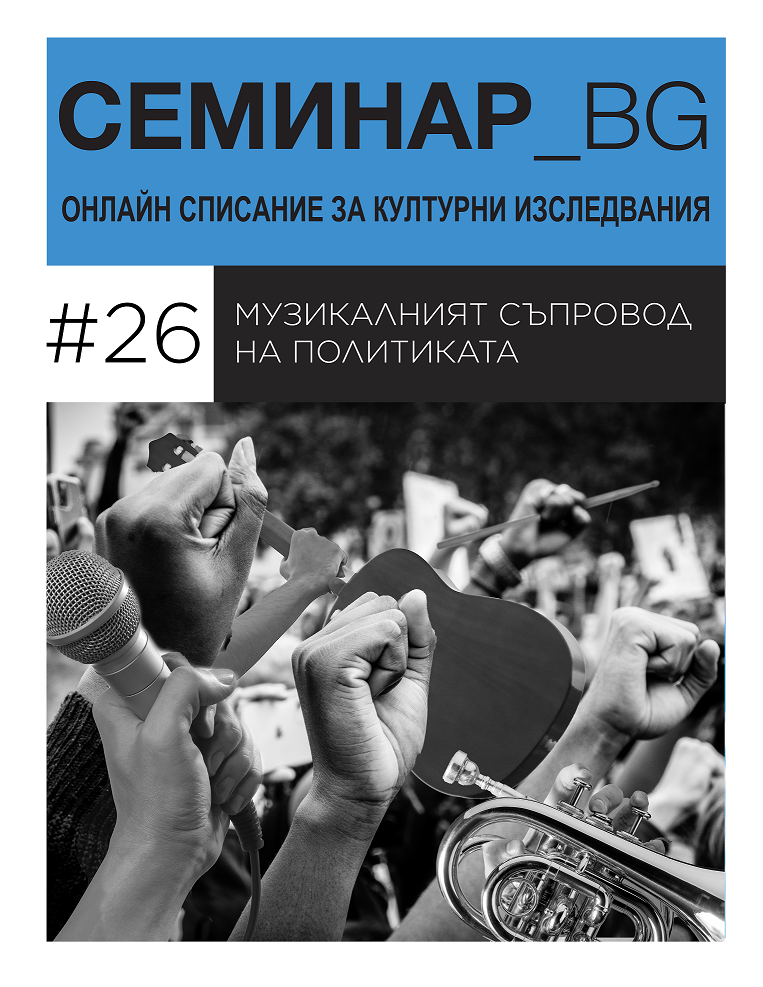Inventing Entertainment
Bulgarian Estrada Music in the 1960s
DOI:
https://doi.org/10.60054/SBG.2023.26.97-118Keywords:
popular music, institutions, aesthetic control, practiceAbstract
The social transformations stirred by the processes of socialist industrialization and modernization made it possible for new mass interest in the consumption of material and cultural commodities to occur in the second half of the 1950s. In this situation, the political authorities require the loyal cultural elite to create and launch modern popular forms of cultural production, which must distract the public from their obvious interest in the patterns of Western popular culture. In the sphere of music, a new attractive enough for the wide public concept should be born – a synthesis of politically justified aesthetic specifications and national representativeness. By the late 1960s, the music intelligentsia in close collaboration with the bureaucracy has managed to create a system of administration of the whole process of education, production, performance, and spread of popular music. In this new status quo, the music academia has the privilege to provide and control the criteria in music production, but at the same time, it is dependent on the perceptive abilities and tastes of the mass public.
References
[Unknown author]. 1959. SSSR, Konkurs za nay-dobra masova i estradna pesen. Muzika, №3, 59.
[No title] 1966 Katalog na gramofonnite plochi, izdadeni ot „Balkanton“ (1958–1966 g.). 1966. Sofia: Balkanton.
Brunbauer, Ulf. 2011. Sotsialisticheskiyat nachin na zhivot. Ideologia, obshtestvo, semeystvo i politika v Bulgaria (1944–1989). Ruse: MD Elias Kaneti.
Cherni, P. 1959. „Iz statiyata „Tantsovata muzika – ogledalo na vremeto““. Muzika, 7: 60.
Chetrikov, Svetoslav. 1959. „Deset godini muzikalni izdania“. Muzika, 7: 51.
Elenkov, Ivan. 2008. Kulturniyat front. Balgarskata kultura prez epohata na komunizma – politichesko upravlenie, ideologicheski osnovania, institutsionalni rezhimi. Sofia: IIBM, Siela.
Gramshi, Antonio. 1976. Za kulturata, literaturata i izkustvoto. Sofia: Nauka i izkustvo.
Griynbarg, Klement. 2003. „Avangard i kich“. Leteratura, 23: 70–79.
Hofman, Ana. 2010. “Kafana Singers: Popular Music, Gender and Subjectivity In The Cultural Space Of Socialist Yugoslavia”. Narodna umjetnost, 47/1: 141–161.
Horkhaymer, Maks i Teodor Adorno. 1999. „Kulturnata industria. Prosveshtenieto kato masova izmama“. V: Dialektika na Prosveshtenieto. Sofia: Gal-Iko, 151–207.
Krastev, Veselin. 1959. „Balgarskata muzika ot 20-te godini do 9 septemvri 1944 g.“. Muzika, 5– 6: 10–13.
MacDonald, Dwight. 1957 (1976*). „A Theory of Mass Culture“. Mass Culture, Giencoe, 59
Parov, F. „Estraden kontsert na ansambala na MVR“. Muzika, 3: 49.
Pipkov, Lyubomir. 1952. „Doklad za sastoyanieto na nashata muzika ot 9-ti septemvri 1944 g. do dnes“. Muzika, 1: 11.
Todorov, Veselin. 2007. Rock ‘n’ Roll ot tamnata strana na zemyata. Sofia: Siela.
Vuchkov, Yuliyan. 1963. „Psihologia na magnetofonnata mladezh“. Plamak, 1: 144–152.
Znepolski, Ivaylo. 2008. Balgarskiyat komunizam. Sotsiokulturni cherti i vlastova traektoria. Sofia: IIBM, Otvoreno obshtestvo, Siela.
Downloads
Published
Issue
Section
License

This work is licensed under a Creative Commons Attribution-NonCommercial-NoDerivatives 4.0 International License.

